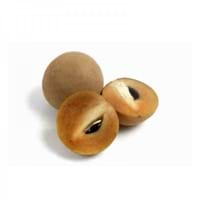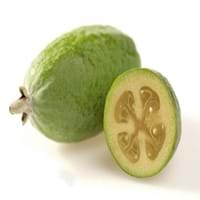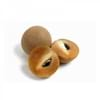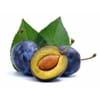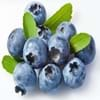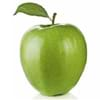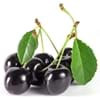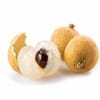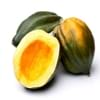Health Benefits
Anti-inflammatory properties, Arthritis treatment, Regulates Blood Sugar, Unknown
Anti depressant, Cancer prevention, Reduces nervous tension, Treatment of alzheimer's disease, Treatment of Lung disease
General Benefits
Boosts immune system, Controls blood sugar levels, Digestive aid
Digestive aid, Helps in weight loss, Improves blood circulation, Strengthens bones, Treatment of common cold
Skin Benefits
Nourishes skin, Protects skin from oxidative stress
Brightens and lightens complexion, Skin rejuvenation
Hair Benefits
Prevents hair loss, Promotes longer and healthier hair, Regulates hair growth
Promotes longer and healthier hair, Protects hair
Allergy Symptoms
Asthma, Red rash, Swelling of mouth, tongue or lips
NA
Side Effects
Diarrhoea, Vomiting
Allergic reaction
Best Time to Eat
As a snack in the late afternoon
As a snack in the late afternoon, Don't consume at night and before bed, Eat the fresh ones, avoid mixing with any other foods, don't eat after meal., Morning time (before lunch)
Vitamin A (Retinol)
Not Available
Vitamin B5 (Pantothenic Acid)
Vitamin C (Ascorbic Acid)
Vitamin E (Tocopherole)
Not Available
Vitamin K (Phyllochinone)
Not Available
Lutein+Zeaxanthin
Not Available
Calories in Fresh Fruit with Peel
Not Available
Calories in Fresh Fruit without Peel
Not Available
Calories in Frozen Form
Not Available
Calories in Canned Form
Not Available
Calories in Juice
Not Available
Calories in Jam
Not Available
Calories in Pie
Not Available
Season
Winter
Autumn, Winter
Varieties
Bush Table Queen, Heirloom Table Queen, Festival Hybrid, Early Acorn Hybrid, Table Ace, Ebony and Cream of the Crop
Anatoki, Gemini, Kaiteri, Kakariki, Pounamu, Unique, Apollo, Den's Choice, Kakapo, Mammoth, Opal Star, Triumph and Wiki Tu
Seedless Variety
Not Available
No
Color
Dark green, Green-yellow, Orange green
Green
Inside Color
Not Available
White
Origin
Central America, North America, Unknown
Argentina, Brazil, Paraguay, Uruguay
Grows on
Trees
Not Available
Soil Type
Well-drained
Clay loam, Gravely loam, Sandy
Climatic Conditions
Cold, Sunny
Cold, Warm
Facts about
- It was named as Acorn Squash for its resemblance to a large ribbed acorn.
- It is said that squash was being grown in Mexico as long as 10,000 years ago.
- It was the first food cultivated by native American Indians.
- Feijoa is called as "pineapple guava" in some countries.
- Feijoa tree is an ornamental plant that can also be used as hedge & windbreak.
- All parts of feijoa fruit are edible(skin is mostly discarded).
Spirits
Not Available
Yes
Cocktails
Not Available
Yes
Top Producer
China
New Zealand
Other Countries
Egypt, India, Iran, Italy, Mexico, Russia, Turkey, Ukraine, United States of America
Australia, Azerbaijan, India, Japan, United States of America
Top Exporter
India
New Zealand
Botanical Name
Cucurbita Pepo
Acca sellowiana
Synonym
Winter Squash
Feijoa sellowiana or Orthostemon sellowianus
Subkingdom
Tracheobionta
Tracheobionta
Division
Magnoliophyta
Magnoliophyta
Class
Magnoliopsida
Magnoliopsida
Subclass
Dillenhidae
Rosidae
Order
Cucurbitales
Myrtales
Family
Cucurbitaceae
Myrtaceae
Species
Pepo
A. sellowiana
Generic Group
Not Available
Myrtle
Difference Between Sapota and Feijoa
We might think that Sapota and Feijoa are similar with respect to nutritional value and health benefits. But the nutrient content of both fruits is different. Sapota and Feijoa Facts such as their taste, shape, color, and size are also distinct. The difference between Sapota and Feijoa is explained here.
The amount of calories in 100 gm of fresh Sapota and Feijoa with peel is 40.00 kcal and Not Available and the amount of calories without peel is Not Available and 55.00 kcal respectively. Thus, Sapota and Feijoa belong to Low Calorie Fruits and Low Calorie Fruits category.These fruits might or might not differ with respect to their scientific classification. The order of Sapota and Feijoa is Cucurbitales and Myrtales respectively. Sapota belongs to Cucurbitaceae family and Feijoa belongs to Myrtaceae family. Sapota belongs to Cucurbita genus of Pepo species and Feijoa belongs to Acca genus of A. sellowiana species. Beings plants, both fruits belong to Plantae Kingdom.
